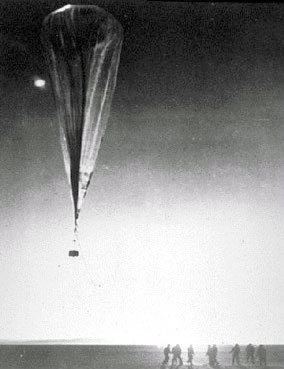 | ||
Project Genetrix, also known as WS-119L, was a United States Air Force program designed to launch General Mills manufactured surveillance balloons over Communist China, Eastern Europe and the Soviet Union to take aerial photographs and collect intelligence. The Genetrix balloons reached altitudes of 50,000–100,000 feet (15–30 km), well above that flown by contemporary fighter planes. Between 10 January and 6 February 1956, a total of 516 high-altitude vehicles were launched from five different launch sites; 54 were recovered and only 31 provided usable photographs. Numerous balloons were shot down or blown off course, and the flights led to many diplomatic protests from the target countries. MiG fighter pilots learned at sunrise the balloons had dipped into shooting range because the balloons floated to a lower altitude as in the colder night air, the lifting gas cooled and became denser, reducing lift, so the ballons dscended to lower altiudes where the air was denser..
Authorized by President Dwight D. Eisenhower on December 27, 1955, Project 119L was the first espionage use of the balloons that had been tested in previous projects, such as "Moby Dick High". Project 119L was a follow up to Project Skyhook, Project Mogul, and Project Grandson. The balloons were used to monitor the Soviet Union for such things as nuclear tests, and returned photography of more than 1.1 million square miles (more than 2.8 million square km) of the Sino-Soviet bloc. Top-secret high-altitude balloon programs such as Moby Dick, Moby Dick High and 119L may account for many of the UFO sightings starting around the mid-20th century. The U-2 spy plane was later developed to replace the Genetrix balloons.
The Soviets recovered many of these balloons and their temperature-resistant and radiation-hardened film would later be used in the Luna 3 probe to capture the first images of the far side of the Moon.
